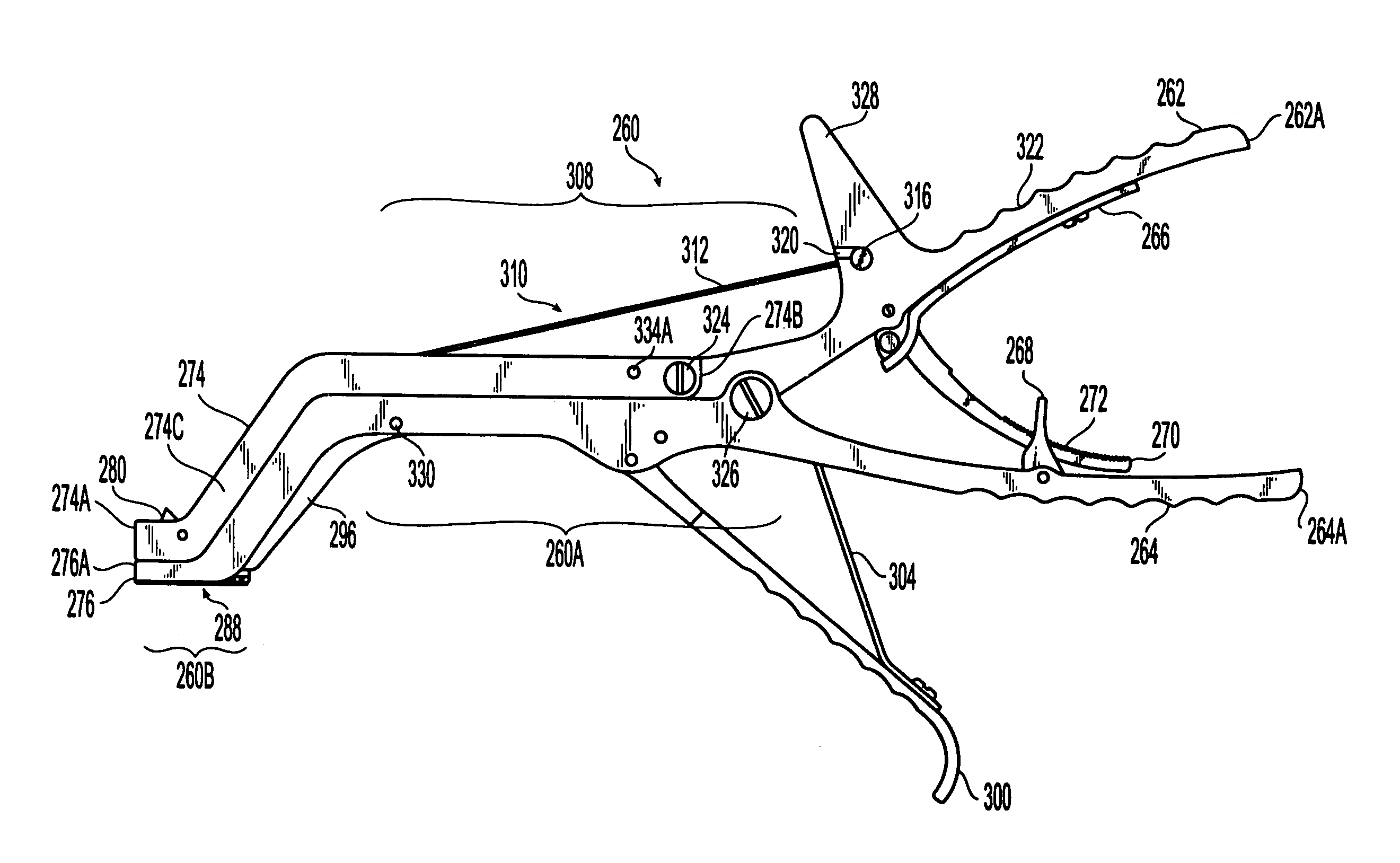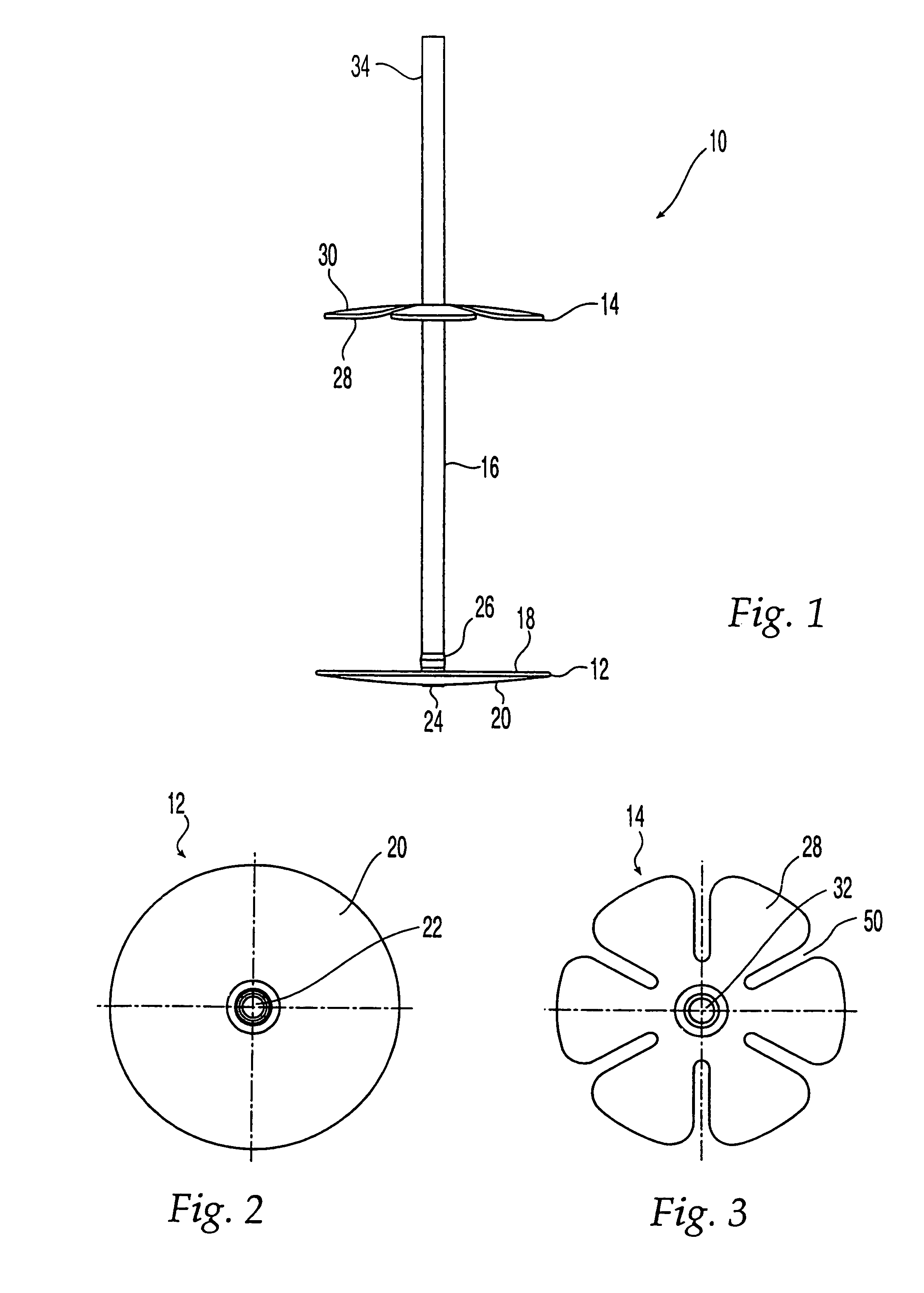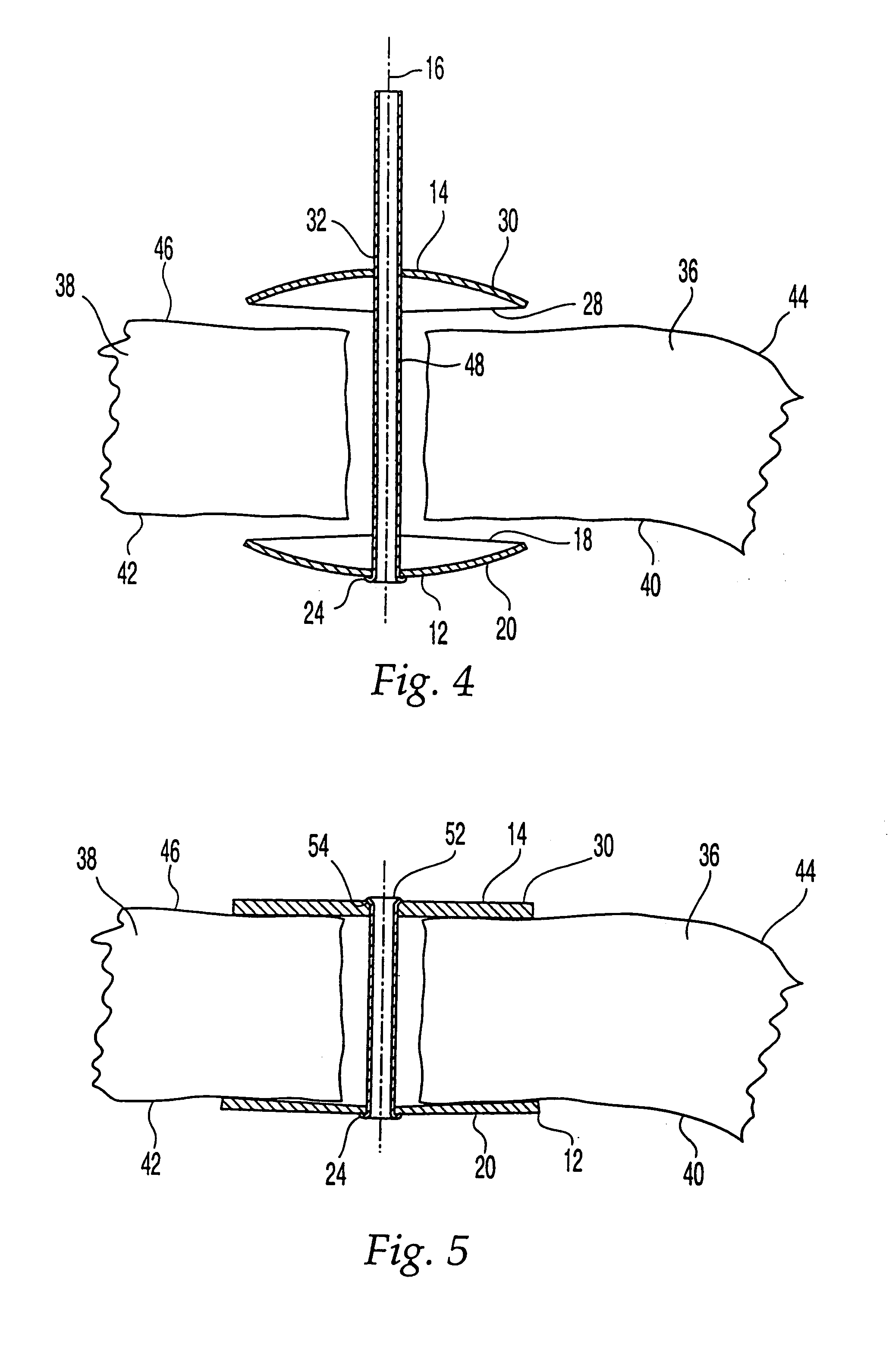Cranial flap clamp instrument
a clamping instrument and cranial flap technology, applied in the field of instruments, can solve the problems of inconvenient use, inconvenient operation, and long time-consuming procedure, and achieve the effect of reducing the risk of injury, avoiding the possibility of bruising or cutting too deep holes, and avoiding the formation of bruising
- Summary
- Abstract
- Description
- Claims
- Application Information
AI Technical Summary
Benefits of technology
Problems solved by technology
Method used
Image
Examples
Embodiment Construction
[0077]As shown in FIGS. 1-4, one embodiment of a cranial flap clamp 10 according to the present invention includes a first clamping member 12, a second clamping member 14, and an extension member 16. Cranial flap clamp 10 can be made of any suitable biocompatible material, such as stainless steel, titanium, a titanium based alloy, or a resorbable material. If cranial flap clamp 10 is made of a metallic material, preferably first and second clamping members 12, 14 and extension member 16 are made of the same material to minimize the potential for galvanic corrosion. First clamping member 12 has a disk shape with a concave inner surface 18 and a convex outer surface 20. Extension member 16 extends from inner surface 18 of first clamping member 12. Although extension member 16 is shown as a tube, extension member 16 can be any similar structure so long as the structure and material allow crimping, as explained below.
[0078]Extension member 16 can be integral to first clamping member 12....
PUM
 Login to View More
Login to View More Abstract
Description
Claims
Application Information
 Login to View More
Login to View More - R&D
- Intellectual Property
- Life Sciences
- Materials
- Tech Scout
- Unparalleled Data Quality
- Higher Quality Content
- 60% Fewer Hallucinations
Browse by: Latest US Patents, China's latest patents, Technical Efficacy Thesaurus, Application Domain, Technology Topic, Popular Technical Reports.
© 2025 PatSnap. All rights reserved.Legal|Privacy policy|Modern Slavery Act Transparency Statement|Sitemap|About US| Contact US: help@patsnap.com



